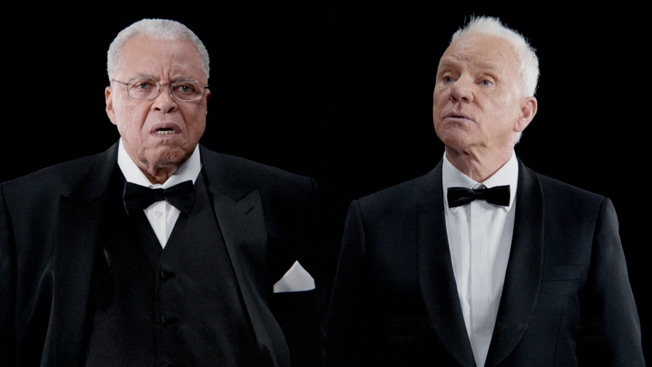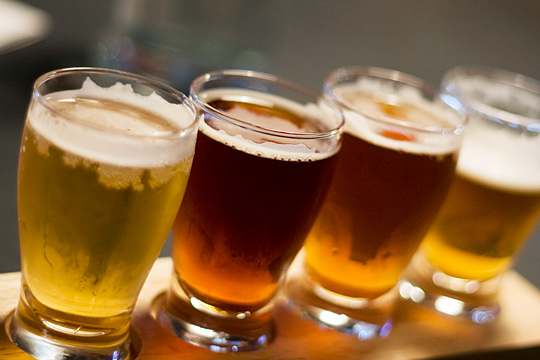A funny
thing happens when people do something well - particularly when that something has never really been done well before. At first, it’s new and refreshing to
witness this common thing in a better light. Many people, myself included, are
enamored with the novelty of this enlightened twist on a previously mundane
facet of their lives. But over time, the newly raised bar becomes the standard,
and people begin to regard the upgrade as the new mundane. This leads the
“doers” into a never-ending game of looking for ways to break the mold and amaze
their target demographic the way they once did, leaving behind that original
improvement as a piece of history, relegated to the “obviously” category. Or as
the hipsters would say, “obvi.”
 |
| Totes magotes! |
You guys
know I’m talking about beer, right?
Believe
it or not, the sorrowful tale detailed above is happening in the craft beer
community. Long ago, circa 1980 (or so), there was very little good beer made
in America. Decades of prohibitive federal laws and regulations, coupled with
corporate takeovers, mass production, money-saving schemes and propaganda
campaigns by major beer producers had watered-down all of the awesomeness that
once was American beer.
Fortunately,
a few heroes arrived on the scene in the early 80s and revolutionized the American,
and by extension global, beer industry for good. They brought back concepts
like using proper methods and proper ingredients. They experimented with styles
that had been all but forgotten, and poured copious amounts of care, pride and
passion into their beer. Clearly, the results were spectacular, and the rest,
as they say, is history.
 |
| So many lagers, so little time |
One of
the first discrepancies these OGs of craft beer set out to fix was American
lager, obviously because that style of beer had been perverted by big beer into
the yellow, fizzy, industrial, mass-produced, swill that most Americans drank
because that’s all there was to drink. By applying the aforementioned concepts,
like proper ingredients and methods, as well as pride, passion, and all that
jazz, they restored American lager to what it was supposed to be - something
recognizable as the crisp, flavorful beer, made with cold-fermenting yeast that
the Germans and Czechs had perfected centuries before. And for those
adventurous souls who joined those heroes, this rejuvenated American lager was
a spectacular breath of fresh air.
Once
lagers had been restored, the craft revolutionaries set their sights on other
projects, such as resurrecting styles like the IPA, stout, porter, etc. They
continued to be met with success, and were praised and lauded by their
ever-expanding fan base at every turn. This success, compounded over three
decades, has brought us to the world we currently occupy, in which craft beer
sees a 17%
sales jump in 2012, even in the midst of a stagnant overall beer market and
an uncertain American economy.
 |
| Doing that thing you do. |
But as I
alluded to in the opening stanza, success breeds more success, or at least, the necessity for more success. Otherwise you’re a one-hit-wonder like the Oneders.
That pressure to continue amazing people leads to brewers constantly seeking to
brew the next big thing – the next trending style – the next interesting
ingredient – the next hop bomb, high gravity monster or high alcohol face-melter.
Now don’t get me wrong… THERE IS NOTHING WRONG WITH THIS. But it does leave us
with the following quandary – what about that American lager that started it
all? Is it now part of the mundane?
In my
opinion, the answer is “absolutely not.” It’s easy to regard lagers as “boring,”
particularly when you try to compare them to all of the other beers out there
that we are capable of making. Lagers are supposed to be simple and unflashy,
given their Reinheitsgebot roots, but that is not a reason to pigeonhole them
into mediocrity. A properly made lager can still dazzle with it’s attention to
the style and overall refreshing attributes. Lagers are particularly wonderful
on a hot day when you sit down in the shade and want to cool off. I, for one,
love it when a brewery has a lager on their flight, and that lager tastes like
a lager is supposed to taste. It shows me the brewer is not just showing off,
but rather understands the subtle intricacies of all styles of beer – even the
simpler ones.
 |
| Victory over big beer! The war is over! |
This
theory can be applied to all styles of beer… not just lagers. At the end of the
day, if a beer is made with proper ingredients and methods, and is true to the
style the brewer says they were aiming for, it’s a victory against big beer
shenanigans, and must therefore be celebrated. I’m not saying that we are not
allowed to be choosy, as it was the desire for more variety and higher quality
that started all of this in the first place. What I’m saying is, we must not
allow our human compulsion of “bigger, stronger, faster” to cloud the fact that
some beers are supposed to be simple, and that simple does not mean dull.
In other
words, give lagers a chance. They can be delicious and various just like all
craft beer. In fact, I think I wrote a blog post many years ago all about
lagers and how diverse they can be. I think I’ll give you a link
to that post because I’m feeling extra generous this morning. You’re welcome.
Here’s
to craft-brewed happiness… Cheers!
No comments:
Post a Comment